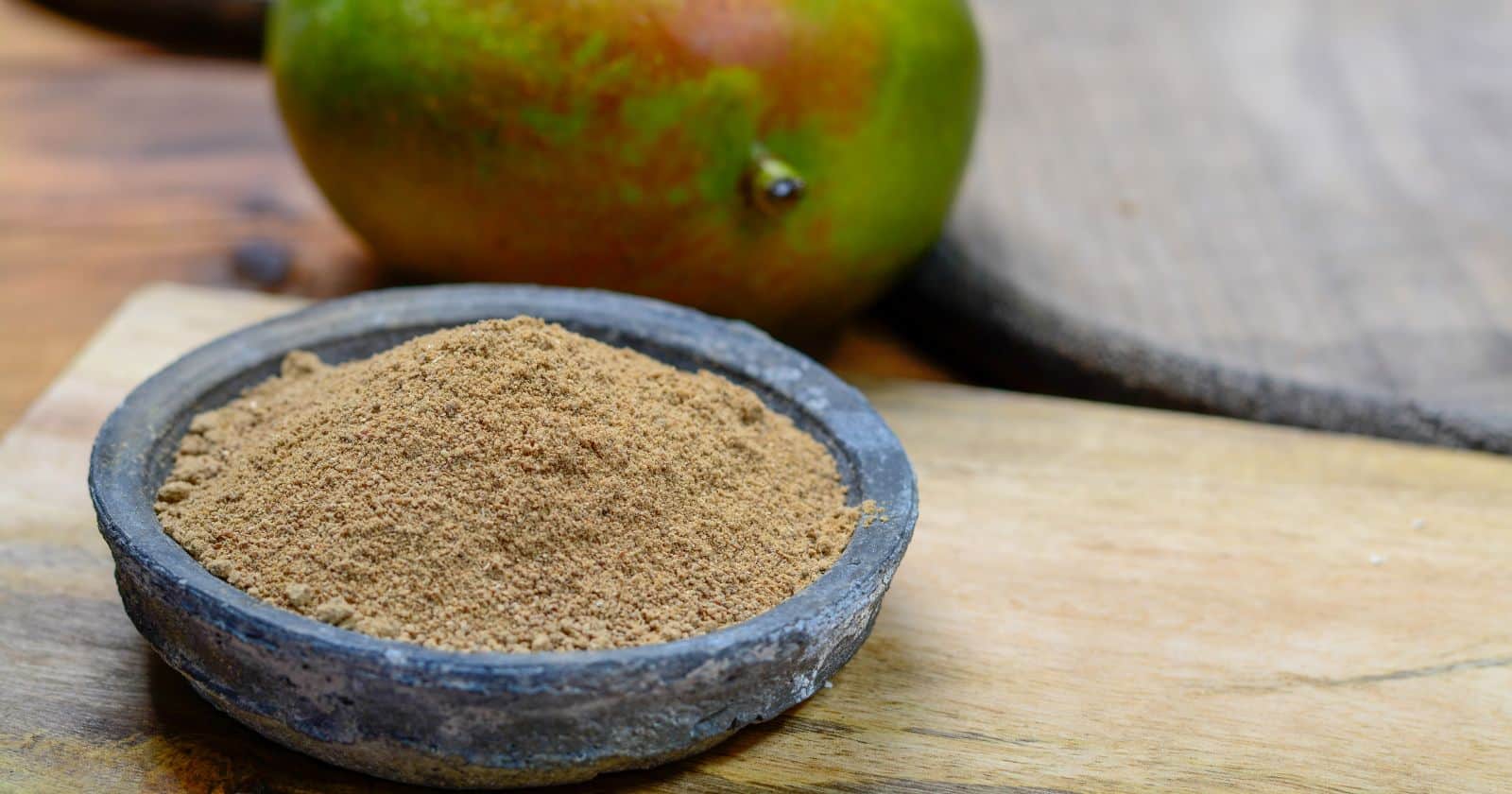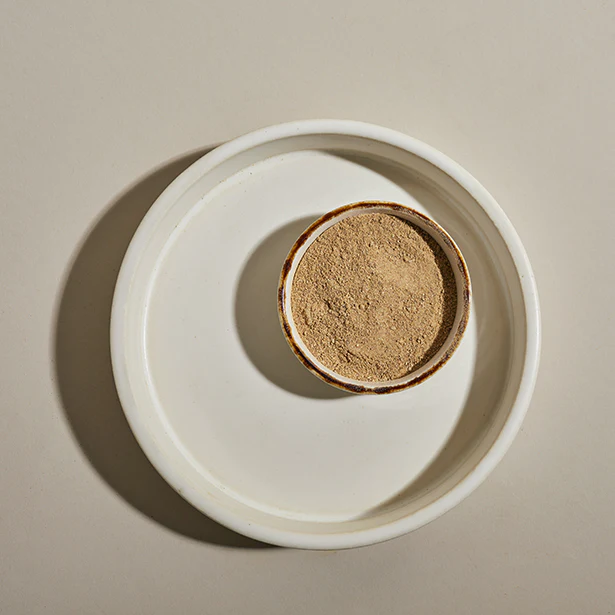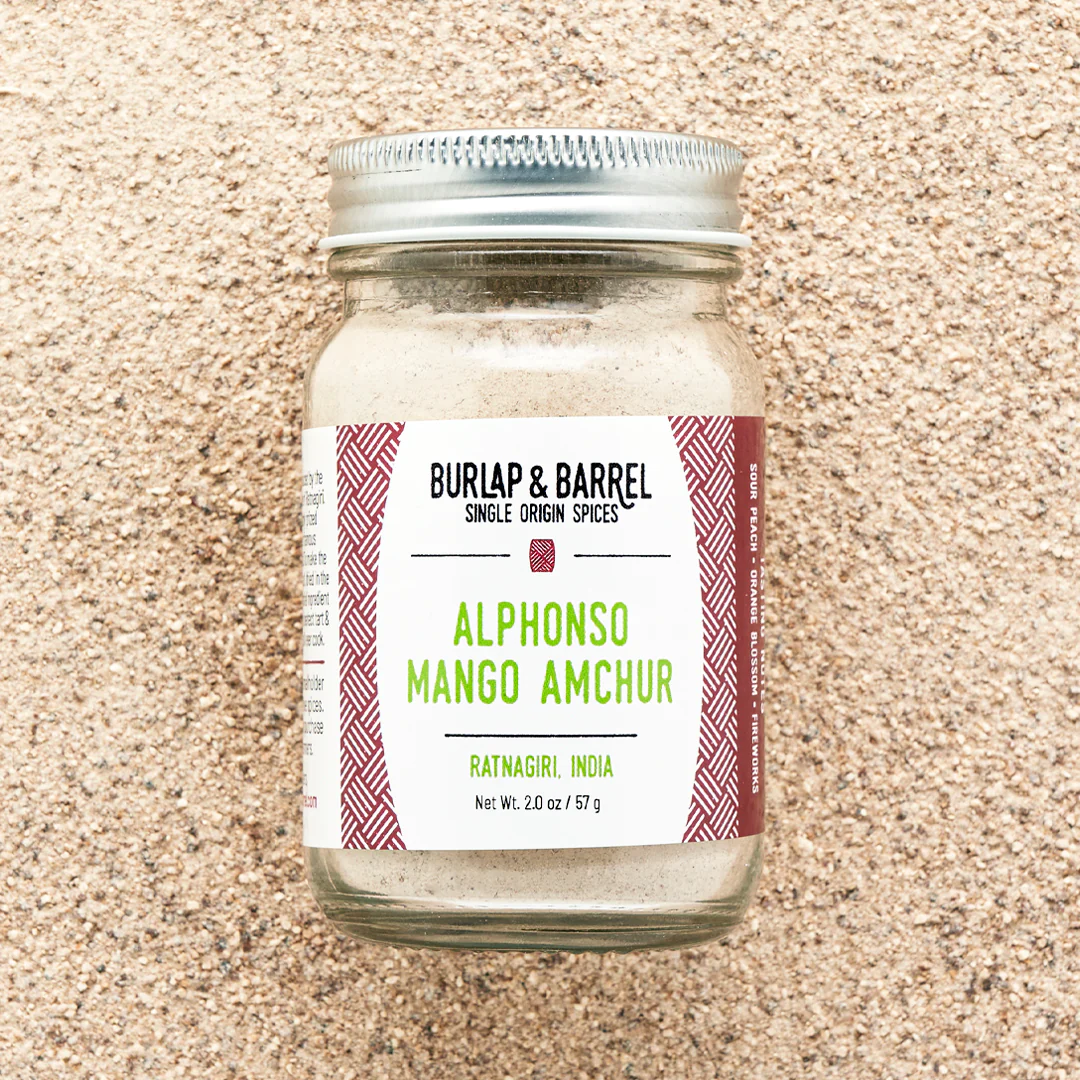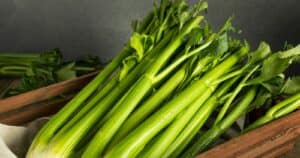Have you ever heard of Amchoor? No need to be embarrassed if not – it’s an often overlooked yet versatile and flavorful condiment.
Amchoor is a tart, acidic
Amchoor is integral in Indian cooking and can be found in many dishes ranging from chutneys and curries to pickles and marinades. It adds an unmistakable tangy aroma with complimentary notes of sweetness, making it the perfect seasoning for grilled or roasted meats, fish, poultry, or vegetables.
For those who may not find themselves near specialty stores offering pre-mixed blends of amchoor powder needed for traditional recipes – have no fear! You can easily make your own potent homemade powder with simple ingredients like turmeric and cumin.
Additionally, some pantry staples, such as lemon juice, make wonderful substitutes if you don’t have any. Dive into the culinary world with amchoor as your flavor guide!
Understanding Amchoor: What Is It And Where Does It Come From?
Amchoor is a
Amchoor is made by drying unripe mangoes, then grinding them into a fine powder. The powder can be mixed with other spices to create unique flavors. It adds a tart, sour taste to dishes and can be used as an alternative to lemon juice or vinegar for adding acidity without the added liquid.
Amchoor can also be sprinkled on top of food for extra flavor or mixed into sauces and marinades for added depth of flavor.
Amchoor is commonly found in Indian cuisine but is also prevalent in other parts of Asia and the Middle East. In India, acidity is often added to curries, stews, soups, pickles, chutneys, and other savory dishes.
In Pakistan and Bangladesh, it’s often added to biryani rice dishes for extra flavor. In the Middle East, it’s often used as an ingredient in falafel sandwiches or sprinkled on hummus for extra zingy flavor.
In addition to its culinary uses, amchoor has been traditionally used medicinally throughout India since ancient times due to its high vitamin C content which helps boost immunity levels when ingested regularly over time.
It’s also believed that amchoor helps reduce inflammation due to its anti-inflammatory properties, which makes it beneficial for treating conditions such as arthritis or joint pain when taken internally or applied externally as part of a topical treatment plan alongside other natural remedies such as turmeric paste or ginger oil massage therapy treatments.
The Flavor Profile Of Amchoor: A Tart And Sour Taste
Amchoor has the flavor of citrus zest with a mild fruitiness. Amchoor is made from green dried mangoes that are ground into a powder, giving it its unique tartness and sour taste. This seasoning can be added at the end of cooking to preserve its flavor or used as a tenderizer in marinades and curries.
Amchur can add an acidic note to soups, stews, salads, and pakoras. Its tartness contrasts with other dishes’ flavors while still being mild enough not to overpower them.
The acidity of amchur also helps to tenderize meats when added during marinating or cooking processes. It can also be used as an alternative to citrus juice for recipes that call for it due to its similar acidic properties but more concentrated flavor profile.
When using amchoor in recipes, it’s important not to overdo it, as too much can make dishes overly sour or bitter. A little goes a long way when adding this seasoning, so start with small amounts and gradually increase until you reach your desired flavor profile.
Additionally, since amchoor is best added at the end of the cooking process, you should adjust other seasonings accordingly so that they don’t become too strong after adding the amchoor powder later on.
How To Use Amchoor in Cooking
When using amchoor powder in cooking, it’s important to remember that a little goes a long way. Here are tips and tricks when using amchoor:
- A little bit of amchoor powder goes a long way, and it can serve as an excellent substitute for lemon juice, vinegar, or any ingredient with a sour taste.
- It can also be used as a marinade ingredient or tenderizer for meat and poultry dishes when mixed with oil or yogurt to break down proteins.
- Amchoor can help brighten up foods even when fresh mangoes are out of season, making it a versatile addition to many meals throughout the year.
- When using amchoor powder in cooking, it’s best to add it towards the end of the cooking process to prevent it from becoming too bitter.
- Amchoor powder can also be added to salad dressings, dips, and sauces for extra flavor.
- For a unique twist, add a pinch of amchoor powder to your next fruit smoothie or yogurt bowl for a tangy, tropical flavor.
- To make your own amchoor powder, thinly slice unripe mangoes and dry them in the sun for several days before grinding them into a fine powder. This ensures you have fresh, flavorful amchoor powder for your cooking needs.
- Amchoor powder pairs well with other Indian spices like cumin, coriander, and garam masala, so don’t be afraid to experiment with different
spice blends in your cooking.
Amchoor in Popular Dishes
Amchoor is a common ingredient in Indian cuisine, especially chutneys, pickles, marinades, and complex curries.
Chutneys

Amchoor chutney is a simple and easy-to-prepare chutney commonly made in India.
Pickles
Amchoor is a key ingredient in pickling mixtures, as it helps to preserve vegetables while imparting their unique flavor.
Curries
Amchoor powder can be added directly to curries or stir-fried with other ingredients to provide a burst of sourness. It is also a great alternative to tamarind paste when making curry sauces or gravies.
Marinades and Rubs
When used in marinades, amchoor helps to tenderize the meat while adding a sour flavor to the dish. It can also be incorporated into rubs for meats such as chicken or fish before grilling or baking them.
Salads
Amchoor can be used as an ingredient in salads or sprinkled over roasted vegetables for extra zestiness without overpowering the dish’s other flavors.
Spices
Amchoor works well with other spices, such as cumin, coriander, and turmeric, for a more complex flavor profile.
Homemade Amchoor Recipe
Making amchoor powder at home is a simple and easy process that can be done with just a few ingredients. Here’s a recipe to make your own amchoor powder:
Ingredients:
- 2 cups of unripe green mangoes
Instructions:
- Wash and peel the unripe green mangoes.
- Slice the mangoes thinly into small pieces and remove the seeds.
- Spread the mango pieces in a single layer on a clean, dry surface, preferably in a sunny location.
- Leave the mangoes to dry for 3 to 5 days until completely dry and hard.
- Once the mango pieces are dry, grind them into a fine powder using a
spice grinder or food processor. - Sieve the powder to remove any lumps or unground mango pieces.
- Store the amchoor powder in an airtight container in a cool and dry place for up to 6 months.
Now that you have your own homemade amchoor powder, you can use it in various recipes to add a sour and tangy flavor. Try using it in curries, soups, marinades, and chutneys as a seasoning. Add a unique twist to salad dressings, dips, and sauces.
Amchoor Substitutes: What To Use When You’re Out Of Amchoor
Are you out of amchoor powder but still want that sour and tangy flavor in your dish? Don’t worry. Here are some substitutes that can provide a similar taste:
Lemon Juice or Vinegar
Lemon juice and vinegar can be used in equal amounts to replace amchoor. They both have a sour taste that can provide the same flavor profile as amchoor. If you want a more citrusy taste, use lime juice instead.
Tamarind Juice or Pulp
Tamarind juice or pulp can also be used as a substitute for amchoor. While it doesn’t have the same tangy taste as amchoor, it can still provide a sour flavor to your dish.
Worcestershire Sauce or Pickle Relish
If you don’t have any of the above ingredients on hand, Worcestershire sauce or pickle relish can be used as a substitute for amchoor. However, they won’t provide the same acidity and sourness level as amchoor powder.
Mustard or Horseradish
For a more pungent taste, you can use mustard or horseradish as a substitute. These condiments have a more robust flavor than lemon juice or vinegar and can provide a unique twist to your dish.
Green Mangoes
You can use green mangoes instead of amchoor powder if you have none of the above substitutes. Grate the green mangoes into a paste and add it directly to your dish. This method may take longer than other substitutes but can still provide an intensely sour taste similar to amchoor powder.
Where to Buy Amchoor?
Amchoor is a commonly used
Many online retailers such as Amazon, Walmart, and Indian-specific online stores carry amchoor powder. This can be a convenient option if you can’t access a physical store that carries it.
Citrusy, tangy, and light gold, amchoor is widely used in the samosas, pakoras, chutneys, and pickles of North Indian cuisine. To make Amchoor Powder, unripe mangoes are harvested early, dried, then pulverized.
This powder is a fine way to enjoy mangoes' flavor and nutritional benefits when they are out of season.







